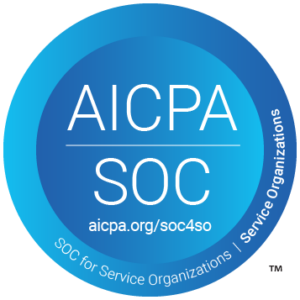This post summarizes key takeaways from our recent white paper, The New Rules of AI for Student Success. The paper outlines how AI can transform higher education, the essential rules to follow, and practical steps for implementation.
A New Age of AI in Education
The paper begins with a foreword from Ruth Watkins, President of Postsecondary Education at Strada Education Foundation. Watkins emphasizes the gap between the promise of AI and its impact, stressing the importance of deploying AI in ways to help students succeed both in their education and beyond.
As Mainstay CEO Andrew Magliozzi puts it: AI is poised to revolutionize higher education much like the internet did in its early days. And as Mary Meeker’s recent Special Report on AI and Education supports, it’s evident that institutions must strategically integrate AI to stay relevant and effective.
We’ve examined the impact of AI on student success in more than a dozen independent research studies over the past decade, and we’ve published this paper to help institutions deliver on the promise of AI.
The New Rules for AI Student Success
- Be Proactive
AI shouldn’t just respond to questions—it should anticipate student needs. Hillsborough Community College’s AI Coach, Gwen, exemplifies this approach. Gwen helped students re-enroll by proactively engaging those nearing degree completion, underscoring the potential of proactive AI engagement in higher education. - Keep a Human in the Loop
It’s crucial to integrate human oversight to ensure AI tools are used effectively. Cal Poly Pomona, with its AI Coach Billy Chat, shows how combining proactive AI messaging with human guidance drives success. Experts like Ruth Watkins have also highlighted that blending technological capabilities with human insights is essential for fulfilling AI’s promise. - Don’t Set It and Forget It
AI requires consistent improvement and strategic guidance. Effective implementations need continuous support and regular adjustments to stay aligned with institutional priorities. Bridget Burns from the University Innovation Alliance emphasizes the importance of treating AI as a strategic priority rather than a one-time setup, going as far as to say “if AI isn’t changing the way you work, you’re not taking full advantage of it.” - Balance Structure and Substance
AI should support both logistics and academics. Georgia State University’s AI Enhanced Coach, Pounce, effectively demonstrates this by sending timely reminders and aiding academic learning, which improves student performance. Balancing logistical support with substantive academic assistance ensures students benefit holistically. - Embrace the Journey
Viewing AI as a journey helps tackle large challenges incrementally. West Texas A&M’s AI Enhanced FAFSA completion project is a prime example of breaking down tasks into manageable steps for effective outcomes. As technologists and researchers like Katharine Meyer have pointed out, AI’s potential is best realized through thoughtful, incremental implementation.
Addressing Common Concerns
As AI becomes more prevalent in higher education, it’s natural to have concerns. Here’s how we can address some common reservations:
- Job Displacement
While AI automates certain tasks, it also creates new roles, like AI platform managers. The best AI tools enhance, rather than replace, the human touch in education. This sentiment is echoed by leaders across the field who see AI as a supplement to human efforts, not a replacement. - Data Privacy
Ensuring AI solutions adhere to robust security protocols and data protection regulations (like SOC-2) is essential. At Mainstay, we prioritize privacy and aim to serve as a model for others to follow. You can read more about our approach to Data Privacy in our Privacy Policy summary. - Algorithmic Bias
Mitigating bias in AI models requires proactive measures. Institutions should engage in inclusive design practices, similar to Norfolk State University’s partnership with students to develop culturally relevant communication tools. Educators and technologists agree that inclusivity is key to effective AI deployment. - Human Oversight
Maintaining human control over AI is critical to ensure ethical standards and institutional values are upheld. Clear regulations and guidelines are essential for accountability. This is a point emphasized by leaders like Cecilia Santiago-Gonzalez at Cal Poly Pomona, who highlights the importance of human intervention in refining AI messaging to better support students.
As Michael Sorrell, President of Paul Quinn College, has noted, the key to breaking through AI hype is ensuring that human oversight and ethical practices guide AI deployment, enhancing its positive impact on student success. By embedding these principles, institutions can navigate the complexities of AI with a balanced and ethical approach.
Practical Guidance for AI Implementation
Effective AI implementation begins with asking the right questions:
- Define the Problem
What specific challenge do you aim to solve with AI? Identifying the exact problem helps tailor AI solutions effectively. - Determine Desired Outcomes
Set clear objectives and success metrics. Knowing what success looks like is crucial for measuring AI’s impact. - Identify Key Departments and Leaders
Ensure cross-departmental collaboration and appoint a project leader. Collaboration across different stakeholders ensures the AI implementation is well-rounded.
Resources & Worksheets
Finally, utilize the frameworks and worksheets provided in the paper to guide and measure your implementation. Using structured tools ensures a systematic approach to AI deployment.
Check out the full resource, including sample worksheets and additional materials here: The New Rules of AI for Student Success


Get the white paper
Our team is committed to using AI to enhance human supports that drive student success. Read the full paper to learn more.


